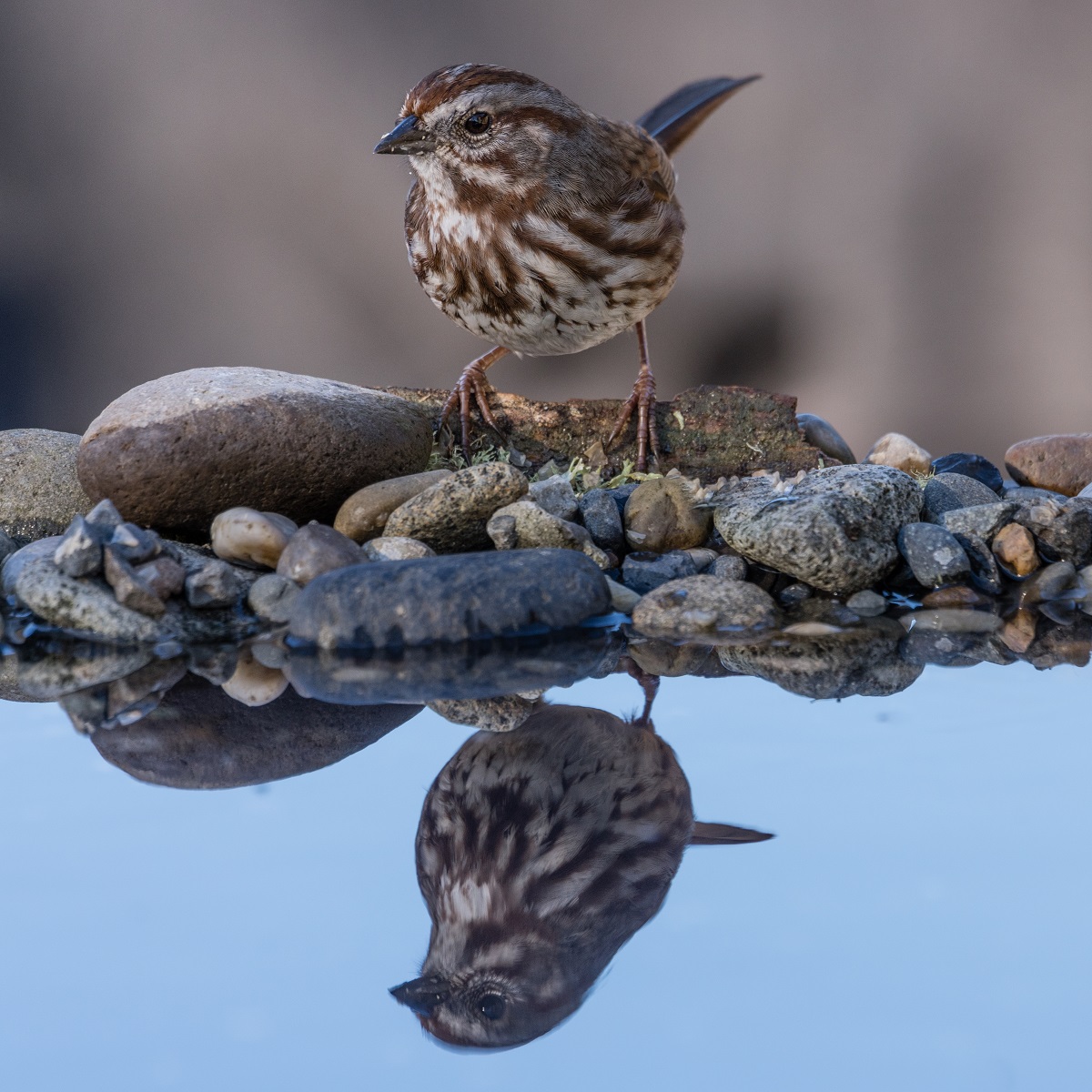Sparrows come from the passeriformes order, the origin of half of all bird species. The Old World sparrow, which includes the house sparrow and song sparrow, is part of the Passeridae family, while the New World sparrow is from the passerellidae family. More than 35 species of sparrow live in the US.
We all love the sounds of sparrows chirping in the morning and their relaxing nature. These “little brown jobs,” as they are sometimes called, may be Old World sparrows from the Passeridae family or New World sparrows from the Passerellidae family. Both types are prominent in the Americas.
Here is a compilation of the 15 most common types of North American sparrows, including their geographic locations, habitats, and markings.
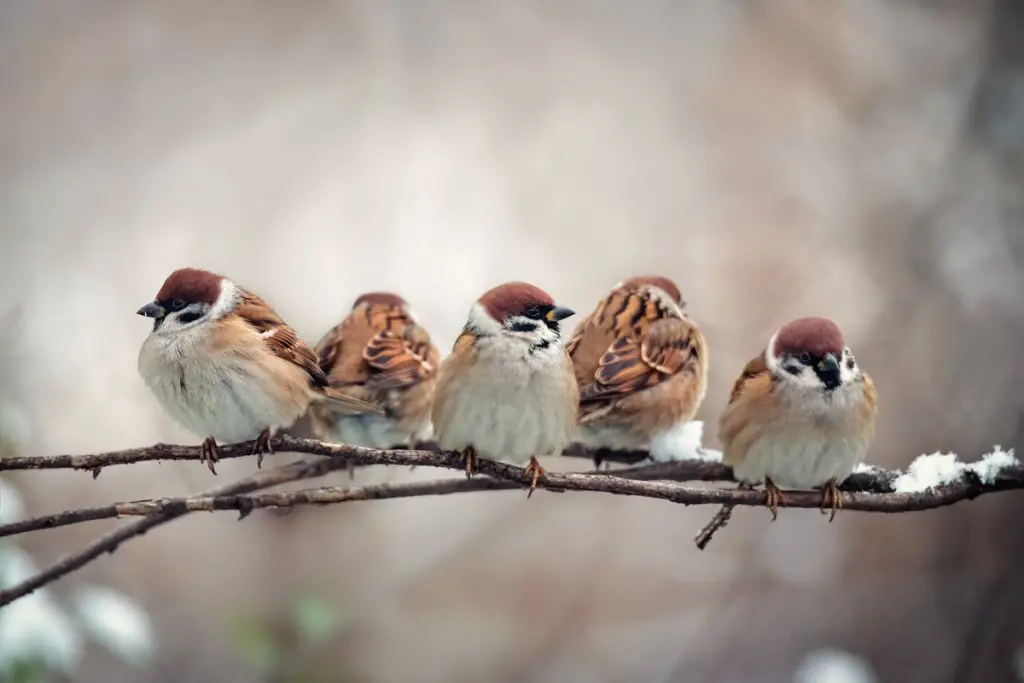
Sparrows Across America
New World species are most prevalent, but even the Old World birds are prominent across North America. Some of the top 35 specimens are everywhere, while a few varieties are usually found in certain areas.
Found throughout North America (15):
American Tree Sparrow, Chipping Sparrow, Clay-colored Sparrow, Fox Sparrow, Harris’s Sparrow, House Sparrow, LeConte’s Sparrow, Lincoln’s Sparrow, Nelson’s Sparrow, Savannah Sparrow, Song Sparrow, Swamp Sparrow, Vesper Sparrow, White-crowned Sparrow, White-throated Sparrow.
Western North America (2):
Baird’s Sparrow and Golden-crowned Sparrow.
Eastern states (6):
Bachman’s Sparrow, Grasshopper Sparrow, Henslow’s Sparrow, Saltmarsh Sharp-tailed Sparrow, Seaside Sparrow, and the Field Sparrow.
Central states (2):
Brewer’s Sparrow, Eurasian Tree Sparrow, which was introduced to St. Louis, Missouri around 1870.
Southern states and northern Mexico (10):
Black-chinned Sparrow, Black-throated Sparrow, Botteri’s Sparrow, Cassin’s Sparrow, Bell’s Sparrow, Five-striped Sparrow, Lark Sparrow, Olive Sparrow, Rufus-crowned Sparrow, Rufus-winged Sparrow, and Sage Sparrow.
Only the House Sparrow and Eurasian Tree Sparrow are of the Passeridae family, while other rest are Passerellidae family members.
Top 15 Sparrow Species
American Tree Sparrow
The American tree sparrow makes its home in the northern hemisphere of North America. They make their home in the Tundra and throughout northern Canada. During nesting season, they will live in regions near Quebec, Ontario, and various parts of northern Canada.
In winter months, they migrate to Northern states, but they won’t go further south than Northern Texas and Oklahoma.
The American tree sparrow has a single dark spot near its chest. Their upper beaks are dark, with a distinguishable yellow lower beak.
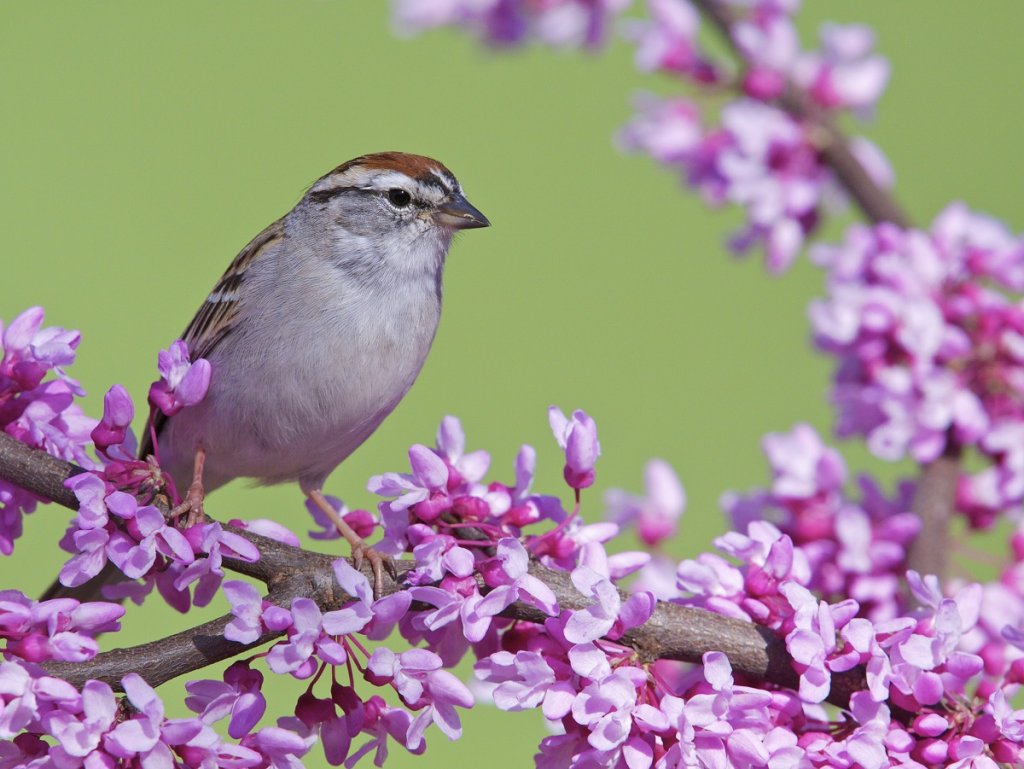
Chipping Sparrow
The chipping sparrow, one of the most common sparrow types, can be seen throughout most of North America, especially at birdfeeders. They are considered one of the most friendly varieties and are very fond of people.
In the summer months, they have been spotted in Canada and as far south as Belize.
They can be identified with their white, orange, and black coloring.
Clay-colored Sparrow
Hailing from the Passerellidae family, the clay-colored sparrow resides in shrubbery and other fields.
They are seen across the country, with smaller numbers on the East Coast. In winter months, this bird can be seen near the southern coast and parts of Mexico.
The clay-colored sparrow is pale gray and buff, with a short bill and long, narrow tail. Their song sounds like an insect with a buzzy tone.
Fox Sparrow
The fox sparrow has been spotted as far north as Alaska and as far south as southern Texas and Florida.
One of the most common species of sparrow, there are four types of their species within their genetic line. They may be red, slate, or sooty-colored, and one species has a large bill.
They are known for being shy and difficult to spot in the wilderness. They feed on the ground with a diet consisting of grubs and worms but will roost on top of pinecones and can be heard singing in the trees.
Harris’s Sparrow
The Harris’s sparrow is one of the most northern sparrow species in North America. In the summer, they live in north central Canada and travel to the central most southern states to winter.
The flock will feed together near bushes and have been known for their shy nature. They mostly feed on insects and berries.
Their coloring will change from a grey face and black crown during breeding season to a brown tone in the winter months. Their species was not discovered in the wild until 1931.
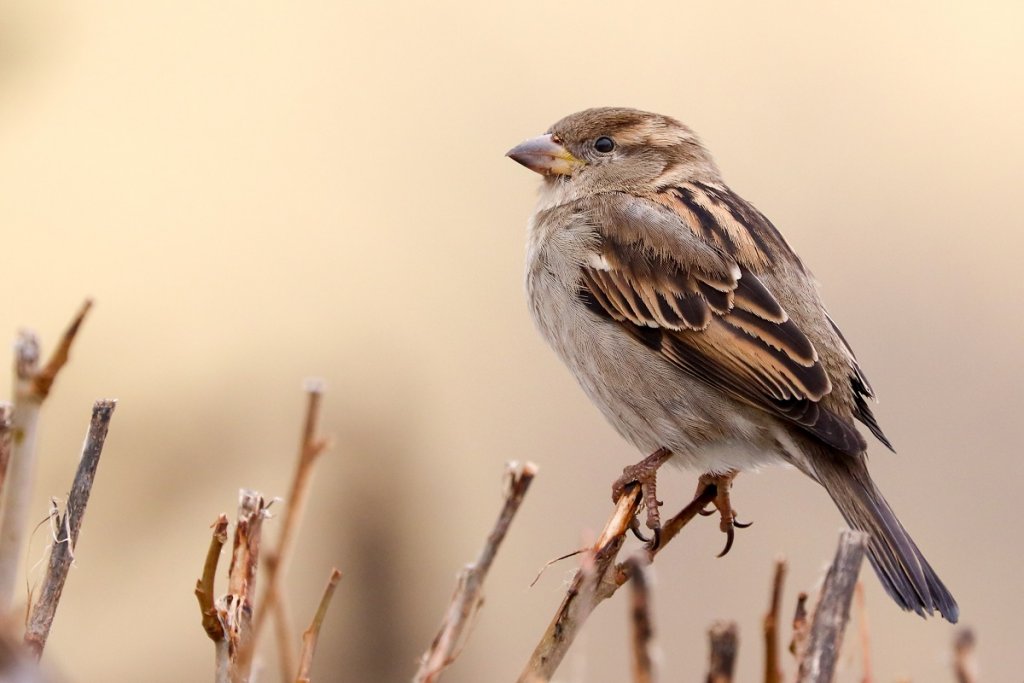
House Sparrow (passer domesticus)
The house sparrow is one of the most common varieties that can be found and numbers 7,000,000 feathery souls. Introduced to New York from Europe in the 1800s to control caterpillar populations threatening basswood trees from Linden Moths, they are abundant throughout the United States and Mexico.
This robust sparrow lives near farms and cities alike. Farmers and city dwellers alike consider them an invasive species.
They love their dust baths and prefer to nest in pre-made boxes or holes in the trees.
Le Conte’s Sparrow
The Le Conte’s sparrow is one of the more elusive versions of their species. They are best spotted in the month of October. Their mating grounds are typically in Central and Northern Canada.
With its bright orange-buff face with a silvery cheek, spotted purplish-gray nape, and crisp black streaking on buffy underparts, the Le Conte sparrow is one of the most attractive species of sparrow. They are small and measure approximately 5 to 7 inches tall.
Throughout history, this species has been hard to observe, so much is still unknown about their breed. Known for their stealth, they often scurry away from danger instead of flying
Their diet consists mainly of insects and seeds,
Lincoln’s Sparrow
The Lincoln sparrow is known for its shyness and keeping itself out of sight and often makes a sharp chirp when in danger or defending its grounds. These birds rarely come out from undercover, and their songs are often mistaken for that of a wren.
Mainly residing in marshes and meadows, these birds have a broad territory and are found across North America.
Ther appearance is very similar to that of a song sparrow.
Nelson’s Sparrow
The Nelson’s sparrow is grey and saffron-colored in appearance, with distinct orange markings on its facial area. The species is on the smaller side of the sparrow family, only reaching about 4 to 5 inches in height.
Their typical environment is tall marshlands in the northern parts of Canada where they will nest near freshwater prairies and on the taiga. Some Nelson’s sparrows will also nest near coastal wetlands on the Atlantic coast.
Previously, they were considered to be salt marsh sparrows under the name sharp-tailed sparrows.
Savannah Sparrow
The Savannah sparrow is seen all throughout North America from near the Arctic Ocean to the shores of Mexico. The primary place this breed calls home is Sable Island, near Nova Scotia.
They prefer grassland and shrubs to conjugate. To spot this species, just look for them on fence posts or near your home. Each sub-species is categorized by its geographical location.
This breed can be identified by its white-colored to brown appearance.
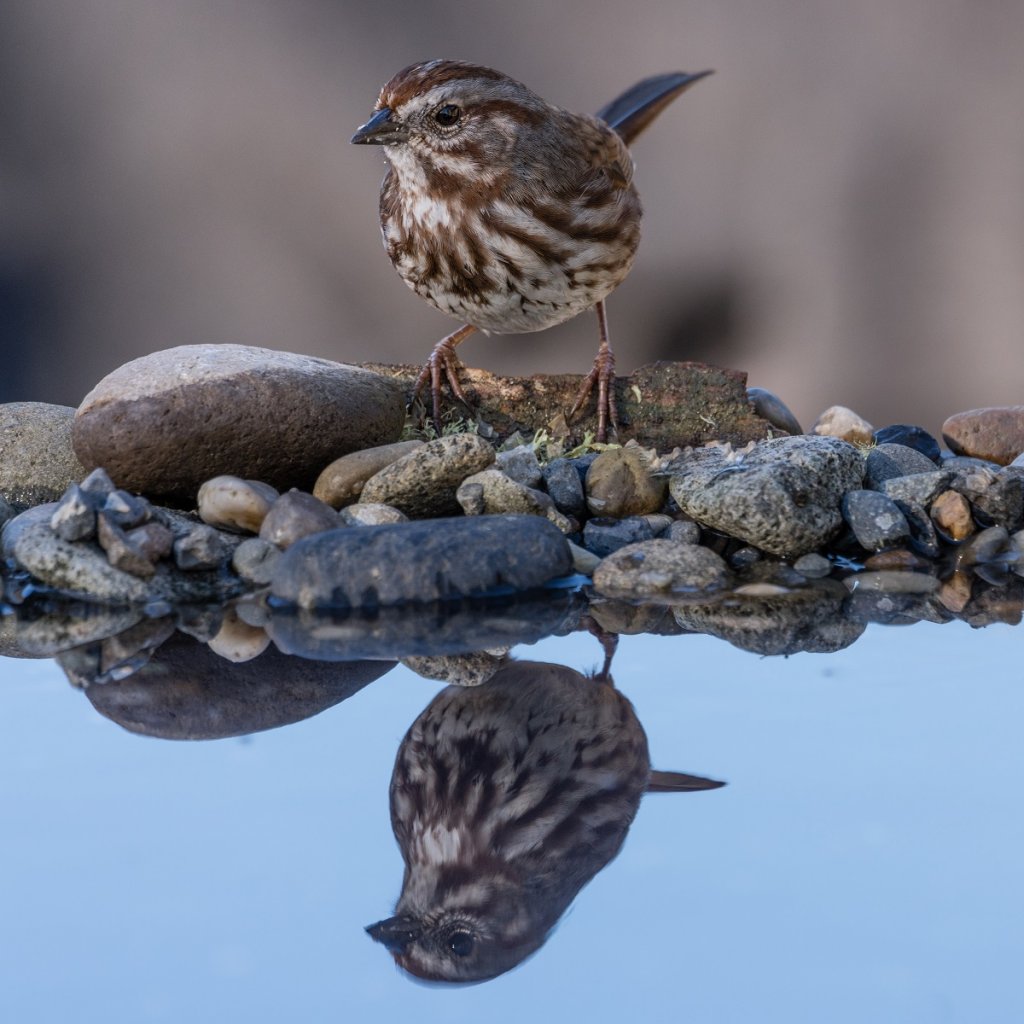
Song Sparrow
The Song Sparrow can be identified easily by their high-pitched, easy-to-listen-to calls. There are a variety of sub-species in this sparrow family, such as the Aleutian, Californian, and Eastern sparrows, which are different sizes and colors.
They have been observed in Northern Canada in the middle of winter. Many live year-round in the northern US, while others winter in the Southern states.
They are one of the hardier varieties of birds.
Swamp Sparrow
The Swamp sparrow can be identified by the beak shaped like a cone. Their crowns are red, and their feathers vary in color between black and a rusty color. Though they resemble chipping sparrows, they are larger.
They tend to live near marshes and swamps and face a loss of habitat. They are geographically located in the Northeast, Midwest, and much of Canada, as far East as the Atlantic.
They are hard to spot and one of the species of sparrows that travels the latest to migrate in the Winter. These two varying species have different color markings.
Vesper Sparrow
The Vesper sparrow is located all throughout the United States and Canada. Their markings include white eye rings and their outer white tail feathers.
What makes them distinguishable is that their species sing at dusk. You may catch them chirping before nightfall, and, in fact, their name comes from these evening songs.
They quickly adapt to their surroundings and have been known to reintegrate near old mine shafts and desolate environments.
White-crowned Sparrow
The White-crowned sparrow is one of the largest within the sparrow family and has three subspecies. They are known for the black and white stripes on their head when fully mature.
Some locate as far North as Alaska and as far south as Mexico, where they may remain all year and are the least likely sparrow to migrate. Others summer in the far north and migrate south.
They are ground feeders who prefer to nest near stunted trees that are closer to the Earth.
White-throated Sparrow
This beautiful specimen can be identified by its prominent white throats, yellow crests, and tan or white crown,
These sparrows will mostly peck at seeds and other tiny morsels on the ground, but they are happy to visit residential bird feeders during the spring and fall.
They breed primarily across Canada and spend most of their non-breeding time in the Southeastern United States.
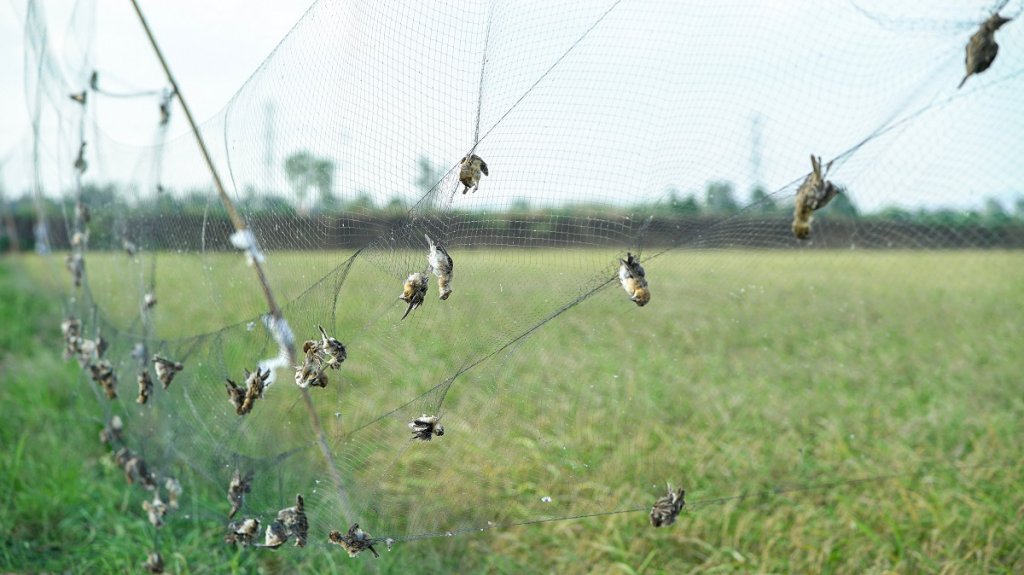
What Are Two Ways To Make Sparrows Leave?
Sparrows have been known historically as the bird of love. The sparrow is known to be a good luck symbol and is even said to be a messenger from the spiritual world.
Love has its price. Their species can wreak havoc near homes and gardens, so getting rid of sparrows is a top priority for many farmers and city dwellers. The two most common ways to rid of a sparrow are to trap it in a cage and relocate the bird or install bird netting to keep them out of your living space, which is fatal to birds.

